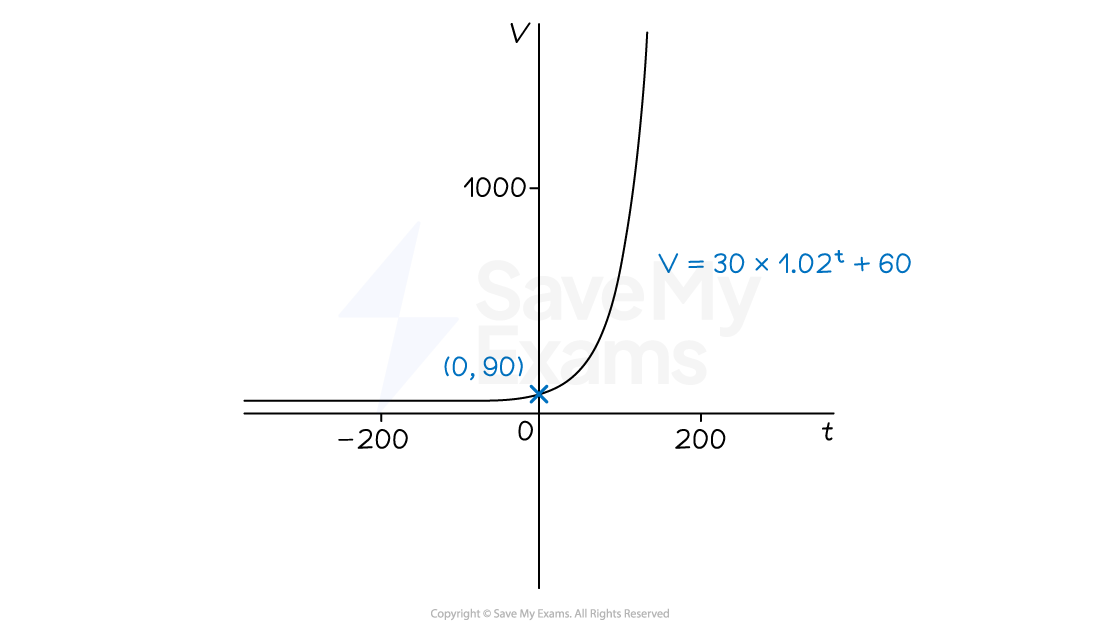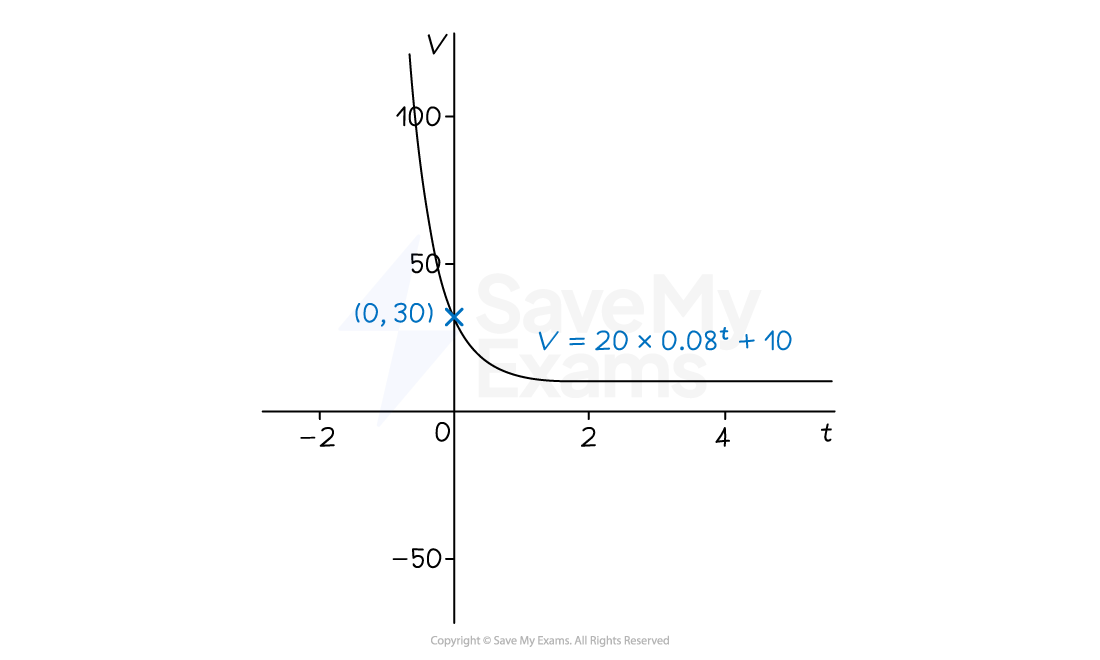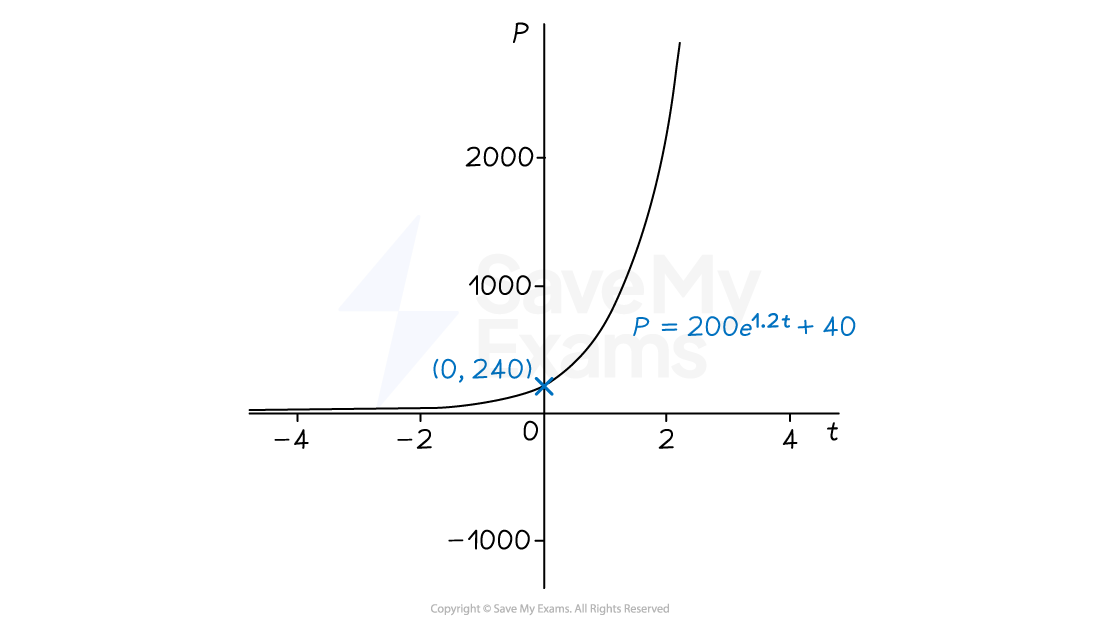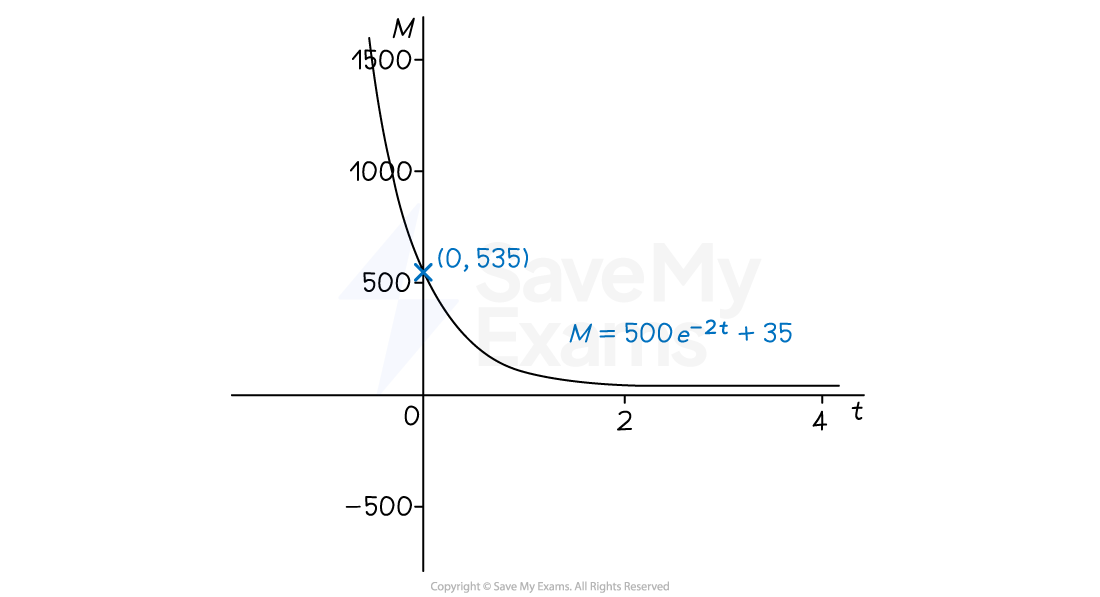Exponential Growth & Decay (AQA Level 3 Mathematical Studies (Core Maths)): Revision Note
Exam code: 1350
Modelling Exponential Growth & Decay
What is exponential growth and decay?
Exponential growth and exponential decay occur when the rate of change is proportional to the size of the variable itself
A population of rabbits will grow faster if there are more rabbits in total
A radioactive substance decays slower when there is less of the substance remaining
What is the equation for exponential growth or decay?
Exponential growth and decay may be written in the forms:
Where
are constants and
is the exponential function
stretches the graph vertically by scale factor
determines the direction and rate of change
If
it is an exponential growth
If
it is an exponential decay
also determines the direction and rate of change
If
it is an exponential growth
If
it is an exponential decay
translates the graph vertically upwards by
(after the vertical stretch)
The
-intercept (when
=0) for both forms will be equal to
is an example of exponential growth

is an example of exponential decay, as
is negative

is an example of exponential growth

is an example of exponential decay, as
is negative

You may also see equations of exponential growth and decay written in a factorised form
E.g.
could be written as
What can an exponential model be used for?
Similar to other types of graphical model, exponential models can be used to estimate or predict data points that are not known
The graph and model can be used to interpolate values that were not directly measured from the scenario
Remember that interpolation has a much greater validity than extrapolation
Extrapolating exponential functions can lead to large errors as they can increase (or decrease) very rapidly
Predicted values can be found by substituting in the relevant known quantity
E.g. Substituting in a time to find a mass
When finding an unknown power, you may need to use logarithms to do this
E.g. When substituting in a mass to find a time
What is a half-life?
In an exponential decay, the half-life is the time taken the for value of a function to halve
The half-life is constant throughout the decay
E.g. For a decaying substance,
The time taken to decay from 100 grams to 50 grams,
is exactly the same as the time taken to decay from 50 grams to 25 grams
Examiner Tips and Tricks
If you are not sure if a function is a growth or a decay, try substituting in some values on your calculator to observe what is happening.
Worked Example
100 milligrams (mg) of a drug are administered to a patient.
The mass of the drug, mg still in the patient's bloodstream after
hours can be modelled as:
After 2 hours a measurement is taken which shows that 64 mg of the drug is still present in the patient's bloodstream.
Work out the mass still remaining in the patient's bloodstream after 6 hours, to the nearest tenth of a milligram.
Substitute in the given fact, when ,
Divide both sides by 100
Square-root both sides
Rewrite the equation with the calculated value of
Find the mass remaining after 6 hours by substituting in
Round to the nearest tenth
26.2 mg
Worked Example
The electric current passing through a particular discharging capacitor (a component in an electrical circuit) is given by:
Where is the electric current, measured in amps, after time
seconds.
(a) The safety instructions for the component state that the current must be less than 1 amp before trying to remove it from the circuit.
Jamie states that the component should be safe to remove after 5 minutes.
Showing your working, decide if Jamie is correct.
Find the current after 5 minutes by substituting in the appropriate value of
minutes = 5 × 60 = 300 seconds
Jamie is not correct, as after 5 minutes there is still greater than 1 amp through the capacitor
(b) Find the time for the current through the capacitor to halve.
By inspection of the equation, the starting value of the current is 13
This could also be found by substituting in
To find the time to halve, substitute in
Divide both sides by 13
Rewrite as a natural logarithm
Multiply both sides by -120 to find
Find the value on your calculator
83.2 seconds (3 significant figures)

You've read 0 of your 5 free revision notes this week
Unlock more, it's free!
Did this page help you?